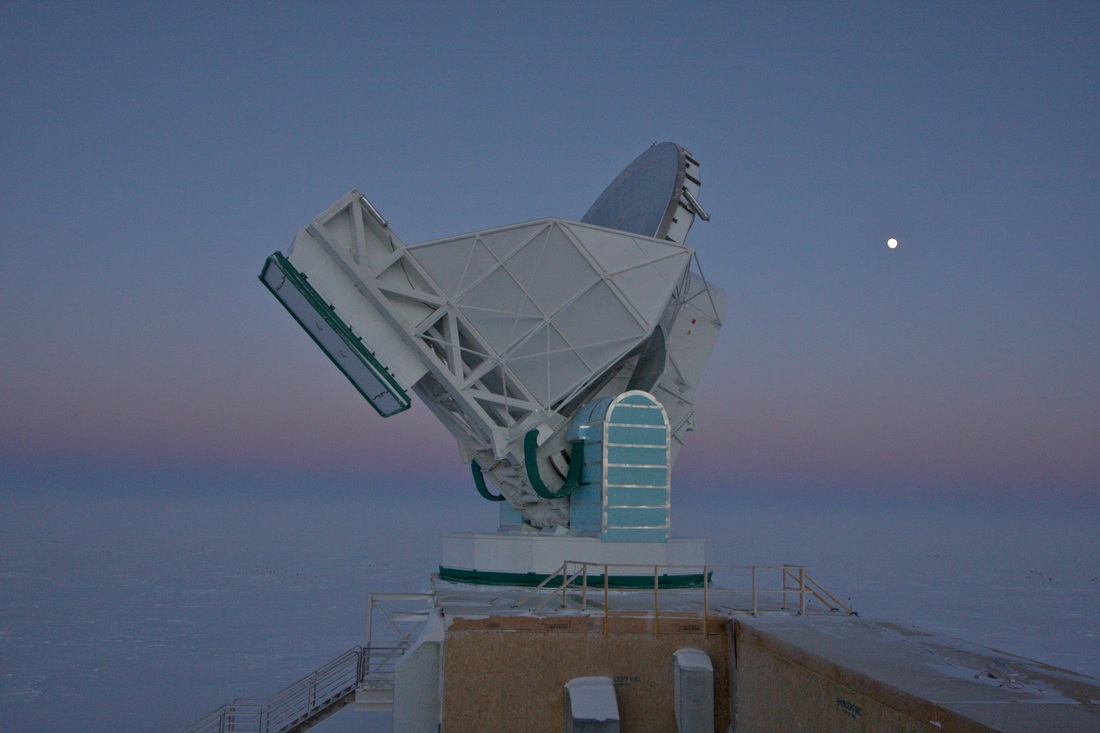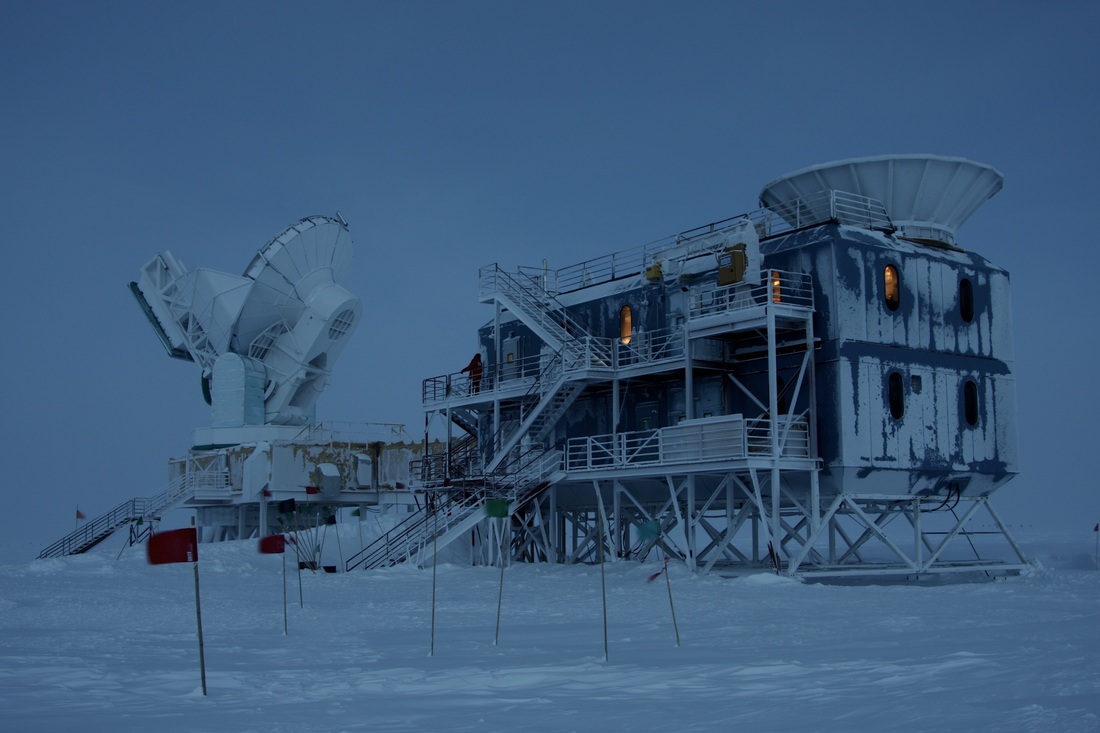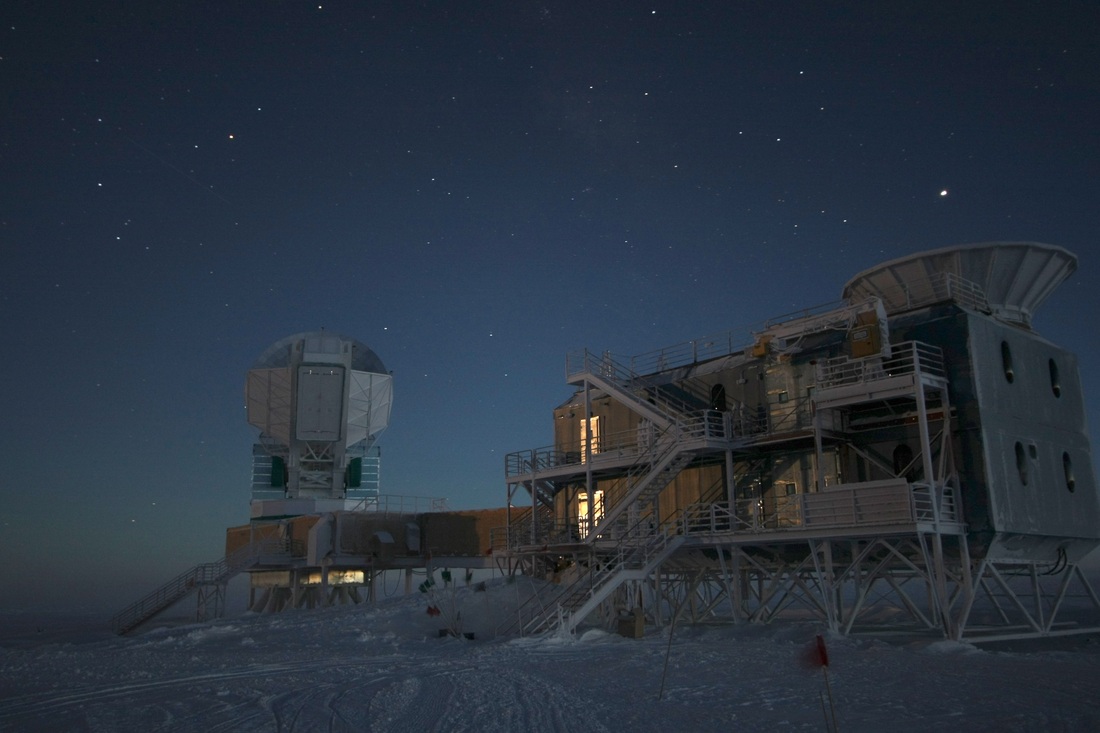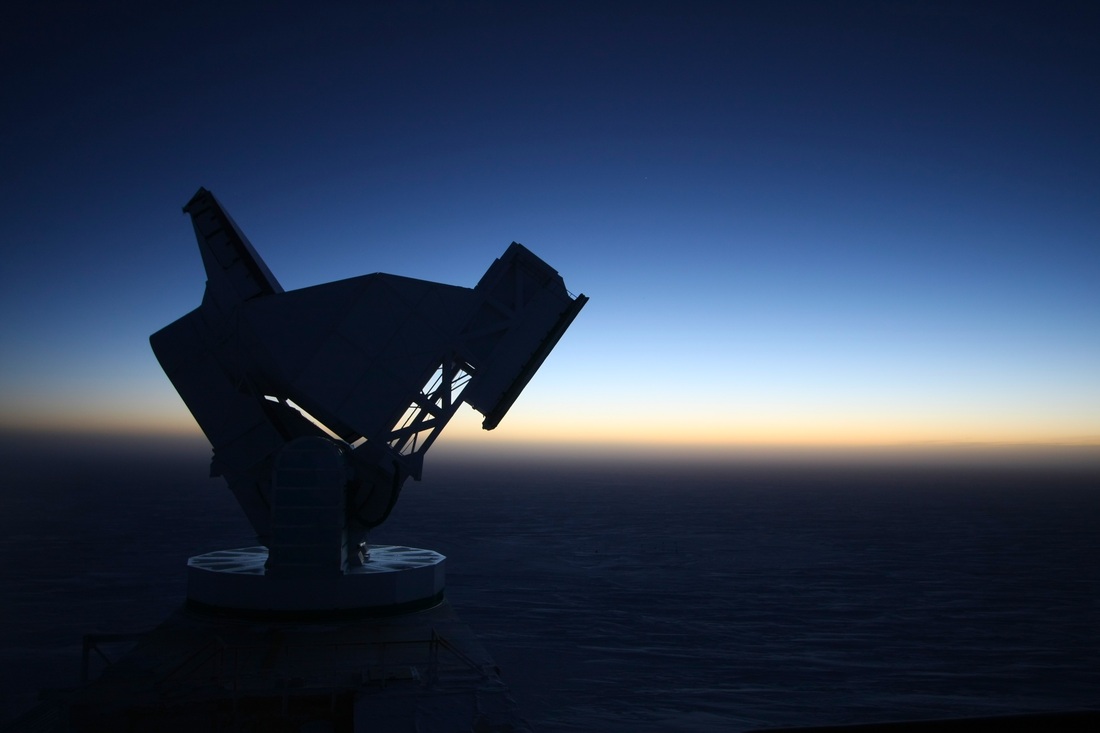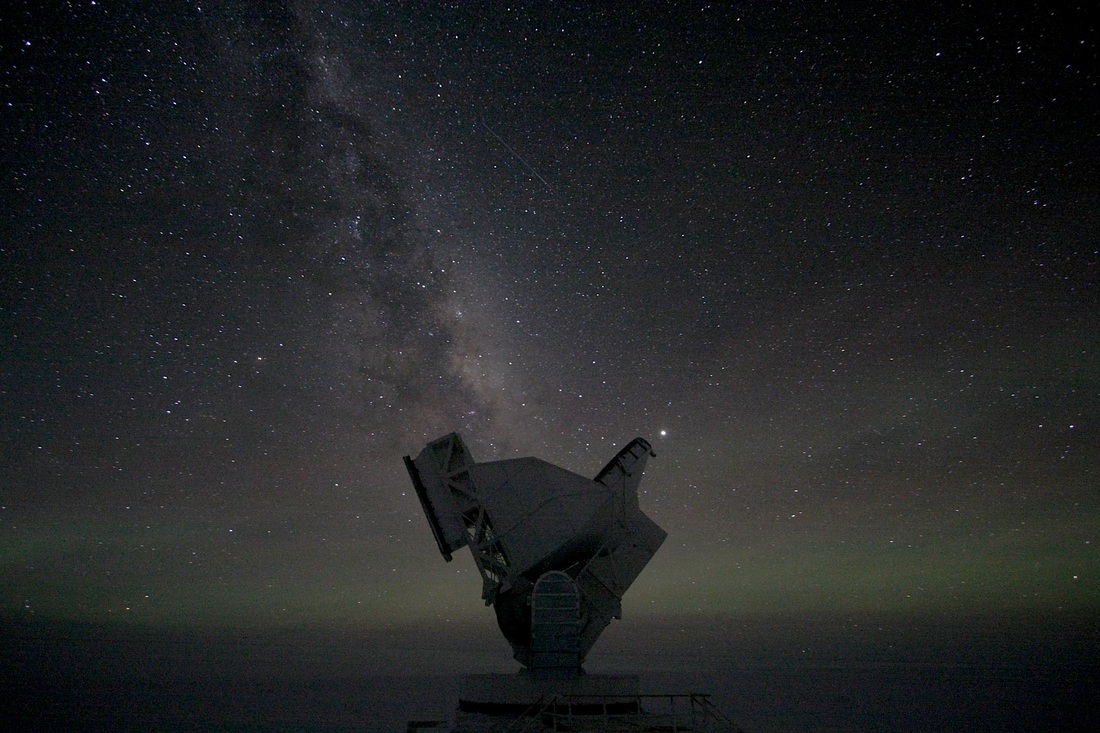South Pole Telescope
|
The SPT is a 10m microwave telescope. As the name suggests, it is located the geographic south pole, supported by the US Antarctic Program's Amundsen-Scott South Pole Station. We survey the sky at microwave frequencies to study the Cosmic Microwave Background (CMB), the "leftover light from the big bang." This light gives us an image of the very young universe, long before any stars or galaxies had formed, long before any significant structure existed, at a time when the physics at work was relatively straightforward and easy to understand.
I joined the SPT collaboration in early 2008, spending an austral winter (Feb-Nov) on-site, as one of two winterovers. The heart of SPT is the receiver, composed of hundreds of TES bolometers operating at sub-kelvin temperatures. These ultra-sensitive thermometers are able to detect the faint variations in the temperature of the microwave sky, and allow SPT to map the arcminute scale structures in the CMB with unprecedented accuracy. SPT completed its initial survey (dubbed "SPT-SZ") in 2011, and has yielded in a host of important publications, ranging from groundbreaking catalogs of galaxy clusters and strongly lensed star-forming galaxies, to the most precise measurements available of the small-scale properties of the CMB. In early 2012, a new polarization-sensitive camera was switched on, and a second survey ("SPTpol") began, this time mapping the polarized properties of the CMB. SPTpol is scheduled to run through the end of 2014, and will be measuring the gravitational lensing undergone by the CMB over the last 13.7 billion years. In the coming years, a further upgrade is planned ("SPT-3G") which will increase the sensitivity by an order of magnitude and enable ultra-sensitive studies of the polarized microwave sky. |
